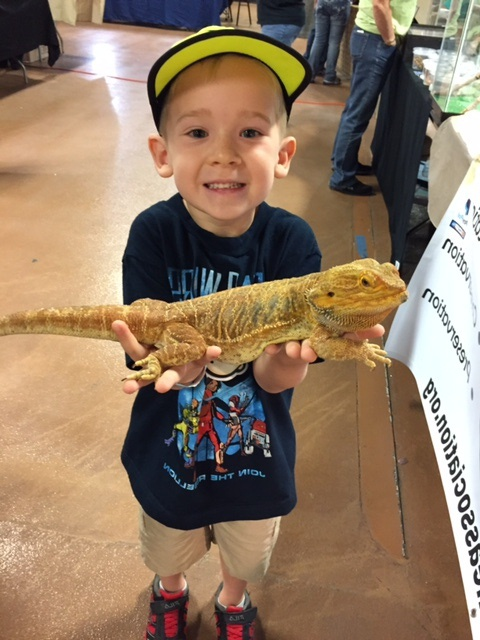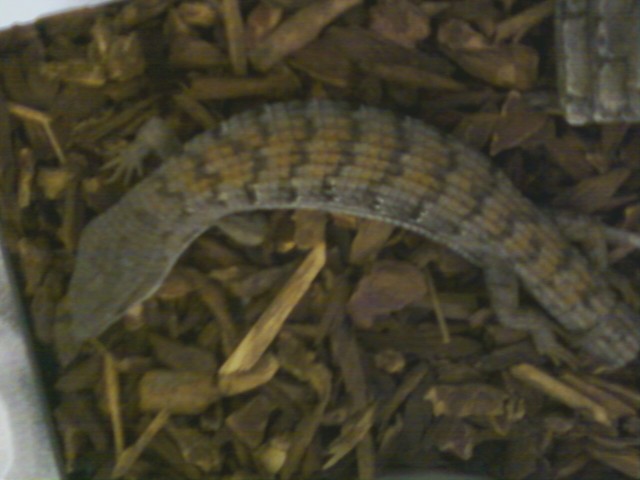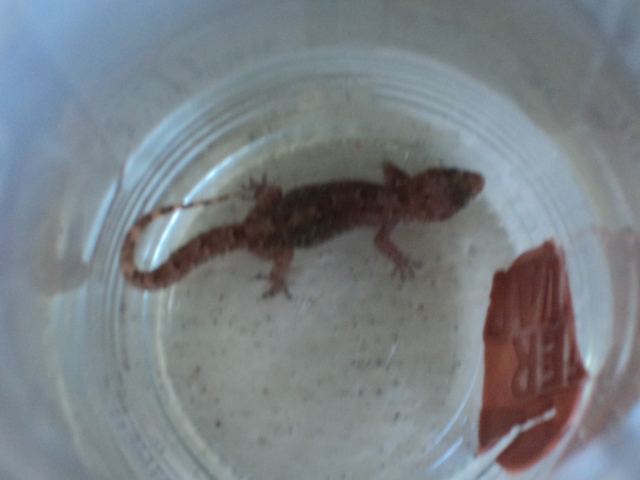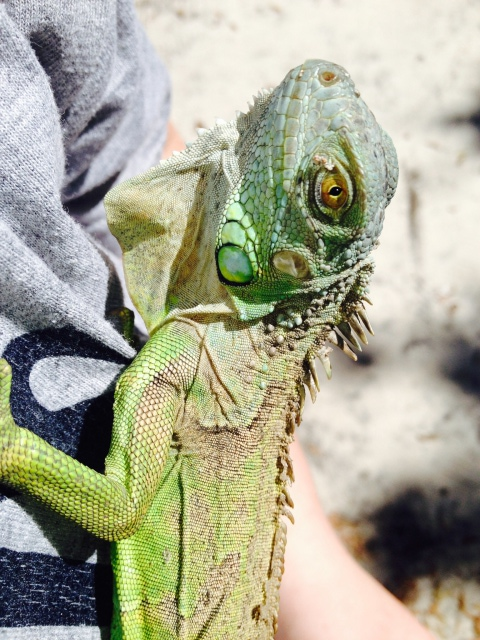QuestionQUESTION: I'm thinking of getting two leopard geckos. My first question is: Can a pet store tell if a juvenile leopard gecko is male or female? I want two leopard geckos and I don't want two males and have them fight one another. I also want information on proper heating and lighting for leopard geckos. I an planning on getting a neodymium bulb for daytime and basking light and an infrared red heat lamp for all hours. First, I want to know if these are safe, and second, I want to know if you can safely use them for fixtures and lamps used made for incandescent bulbs. Thank You!
-Edmund
ANSWER: Hi Edmund,
Generally, leos can be sexed at a fairly early age. I do recommend two females though..and even that isn't a guarantee that they won't fight. With housing a male and female together, you run into breeding issues which is very stressful to both sexes and can lead to too early breeding which can cause severe problems. With male and female, it is best to house separate, other than for a short time if you choose to breed them.. You are correct, two males cannot ever be housed together. Soo, two females is the best for housing together.
You don't need "overkill" with lighting for leos. I use a low uvb output uvb fluorescent tube and a heat projector for daytime, of course along with an under tank heater.
The heat projector,which produces no light is on a thermostat as is the undertank heater. These are "on" 24 hours a day. The uvb light is on during daylight hours. I don't offer any light at night, but the nocturnal bulbs are fine if you choose to use one. With all the lighting you are thinking of using, chances are you will be creating too much heat for the leo. I do recommend an undertank heater as they are ground dwellers. If you choose, you can use an overhead light/heat source during the day and the nocturnal at night. Sometimes the red heat lights bother some lizards, even though they say they can't see the light.
I recommend using only fixtures that have the ceramic socket in them since the lights are on for so many hours at a time. As long as the wattage of the bulb doesn't exceed the max wattage recommended for the fixture, then they are safe. Most with a ceramic socket can handle 100 watts and up to 250 watts, which in most cases, even 100 watts is too much heat for a leo. All the bulbs you mention are safe for them as long as the leos tolerate them, but, a basking light may produce too much bright light which the leos again may not tolerate.
I am including a basic care sheet that I wrote to help people out with caring for leos. In it you will find the temperatures,etc that they need.
BASIC CARE FOR A LEOPARD GECKO
Leopards are pretty easy to care for but they do need
special care. Here are some of the basic needs of your gecko.
HOUSING: The need to have at least a 20 gallon long tank for one Leo. This needs to have a secure fitting screen top...they can be quite the escape artists!!! They need to have a humid hide box.You can make this with something as simple as a small plastic dish with a hole cut in one side and a small mesh bag filled with some Sphagnum moss coconut bark or Peat moss that you mist.
I made mine out of the small plastic folgers coffee containers...I cut an opening in the lid..and put the moss in..they LOVE it. I use the terrarium moss in mine.
I use that on the warm side of the tank. Be sure to provide a cool hidebox on the other end. I also provide a mid temperature hide...which is in the middle of the tank.I use the critter caves which you can purchase. NOT the ones that have heat in them!!!!
Provide secure climbing areas for your gecko. Fake plants, rocks and branches are all fine to use. be sure there are no wires or sharp ends to any fake plants you use.
*****SUBSTRATE:(that's the stuff on the floor of your tank) Newspaper, lizard carpet or paper towels work great and are easy to clean and are much safer than any loose substrate. Sand or other loose substrate is not recommended as that they can be deadly to the leo when it is ingested(eaten, even by accident while eating their insects)...A very graphic site of an impacted leo surg can be seen at http://homepage.mac.com/exoticdvm/reptile/PhotoAlbum181.html it is very graphic!!! ******What I have found that works great for safety and heat distribution is using about 1/4 inch of childrens play sand(since the tiles fit tight together, there is no sand danger) on the bottom of the tank and on top that you place ceramic or slate floor tile. What is nice is that the 12 x 12 squares fit perfect in a 20 gallon tank with no spaces between the tiles. The sand and the tile distribute the heat wonderfully. Using the under tank heater as described is what distributes the heat. Also, overhead heat will help in heating the tiles...I've been using this set up for several years and the leos love it. Using a tile that isn't smooth is recommended. **********
TEMPERATURES: They need a warm area ( on the floor) of 88-92 degrees and a
cooler area in the upper 70s, low 80s. At night their temperature can drop to the low to mid 70's.
Never use a hot rock for a leopard gecko...or any reptile.
They can severely burn any reptile. You can use a heating
pad under the tank,under tank heater for the warm area. You can use a regular household lightbulb in a dome fixture with a ceramic socket in it to keep the warm area at the 88-92 degree area if needed there, otherwise, placing the lightbulb about midway in the tank will give the needed temeratures throughout the tank. You may have to play with the wattage of the bulb but generally 40-60 watts is sufficient.At night, no white light. If room temperatures stay above 70 degrees, no extra night heat is needed. The undertank heater or heating pad should cover about 1/3 of the tank....be sure to raise the tank up about 1/4-1/2 inch off the stand when using an undertank heat source to prevent heat build up which can cause the glass to break and hot spots in the glass. Be sure to have a good layer of newspaper, carpeting or, even a thin flat rock(such as tile) on top the area that the undertank heat source is placed...if you use a thin rock or tile, it helps to distribute the heat very well.
You can use the special nighttime lights that are designed for reptiles. I like using a ceramic heat emitter on a thermostat for nighttime heat.
DO NOT use black lights or party lights as they can cause eye damage!!!!
The wattage you use will vary based on room temperature and size of tank.
LIGHTING: Leopard geckos do not need UVB lighting but it does not hurt them to give them uvb. They should have some type of light during the day, be it a uvb tube, regular florescent light, reptile day light or regular household lightbulb. NO white lights at night!!!
FEEDING: Geckos should not be fed crickets or other insects that are bigger than the space between their eyes. Generally, hatchlings can be fed more than once a day,juvys can be fed twice a day, adults are fed once daily or every other day, in the early evening. Crickets and other food items such as silk worms, super, and an occasional treat of a wax worm, need to be dusted with a calcium supplement two times a week and also they should have a small dish of calcium in their tank. I use the lid of a milk jug for the little dish of calcium in their tank. For dusting the insects, Use a calcium with no added phosphorus. Insects must be gut loaded(fed) for at least 48 hours prior to feeding your gecko. Remove any uneaten crix or superworms after 15-20 minutes..... Place a piece of cut potato in the tank so that if you have missed any uneaten insects, they will eat the potato instead of nibbling on your gecko!!!
*************You have to be sure to feed your crickets and insects the right foods before feeding them to your gecko. If your crickets/insects are not healthy and well fed, your gecko will not get the nutrition he needs. You can gut load your crickets and insects greens, veggies, cereals or specially designed commercial foods for crickets or the insects you are feeding. ************
Be sure to have a small dish of clean water for your gecko at all times!!
You can offer them some baby food or fruits on occasion ...
Mine will even eat a small piece of watermelon now and then.WATER: always provide a dish of drinking water. If you choose to mist your gecko to drink, its best to not get the tank too wet as that they do not do well with higher humidity. Sometimes its better to take your leo out of their tank to mist them to get them to drink!!!
HANDLING: Some geckos enjoy being held...others prefer not to be handled at all. Be sure to be very gentle when holding your leo and NEVER grab them by the tail! Their tails are extremely fragile and will break.
I do suggest finding a vet that can treat reptiles BEFORE you actually need one!!! To find a vet that is able to care for reptiles:
http://www.herpvetconnection.com
http://www.arav.org/ECOMARAV/timssnet/amm/tnt_mdsearch.cfm
http://www.anapsid.org/vets/
For more information on leopard geckos:
http://www.drgecko.com
If you have any questions or don't understand something, please let me know.
---------- FOLLOW-UP ----------
QUESTION: How many heat sources should I use for a leopard gecko? I know ceramic heaters and under tank heaters work, but I don't know if I can should use both of them. Also, do leopard geckos need basking bulbs, or are just fluorescent bulbs fine?
AnswerHi Edmund,
Its best to use both the undertank heater and an overhead heat source, such as the heat emitter. Using the low output uvb(2-5%) tube(fluorescent)will generally provide enough daylight light. Many leos do not like or need the brightness of a basking light, so they aren't really needed. If the tank is really large, you may have to add an additional overhead heat source in another part of the tank. Of course this will also depend on the temperature of the room the tank is in.
To give you an idea,I use an undertank heater, a heat emitter(on 24/7 on a thermostat) and during the day an 18 inch uvb tube. The tank is a 20 gallon long with room temperature that ranges from 70-74 degrees. If, for some reason you do need an additional heat source, you can use a regular incandescent lightbulb during the day. In most cases, the heat emitter and undertank heater that you use during the day will be enough for night time..
My heat emitter is a heat projector from www.reptileuv.com It is 60 watts so if you use a ceramic heat emitter, you shouldn't go any higher than a 60-80 watt on that. The heat projectors are 60 watts, but heat a bit differently than a CHE so they are more like 80 watts in the heat they put out.

 Eyes twitching on a bearded dragon
QuestionQUESTION: What could cause my 5 year old male b
Eyes twitching on a bearded dragon
QuestionQUESTION: What could cause my 5 year old male b
 southern alligator lizard-paralysis
Question
Siggy sleeping
Hi, I just found an alligator l
southern alligator lizard-paralysis
Question
Siggy sleeping
Hi, I just found an alligator l
 East African Lizard
Question
Lizard
Good morning,
I am currently working
East African Lizard
Question
Lizard
Good morning,
I am currently working
 Juvenile Green Crested lIzard
QuestionQUESTION: Hi, I just got a wild caught green cr
Juvenile Green Crested lIzard
QuestionQUESTION: Hi, I just got a wild caught green cr
 Green iguanas
Question
Green iggy
Hi I have two green iguanas
Green iguanas
Question
Green iggy
Hi I have two green iguanas